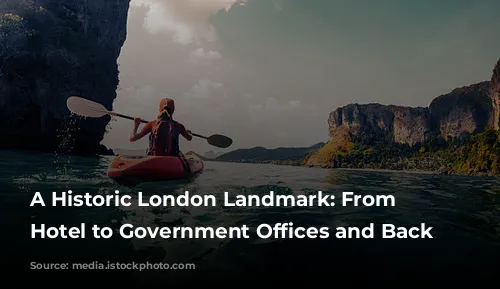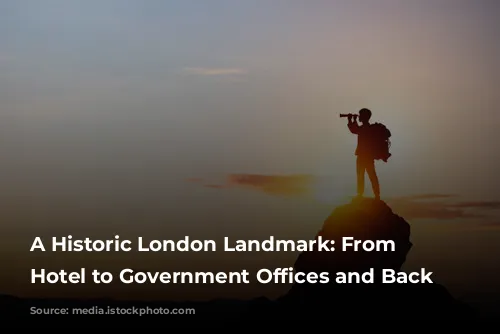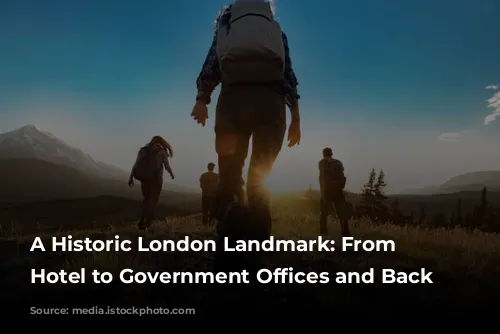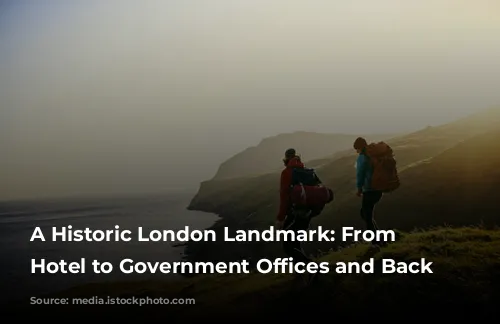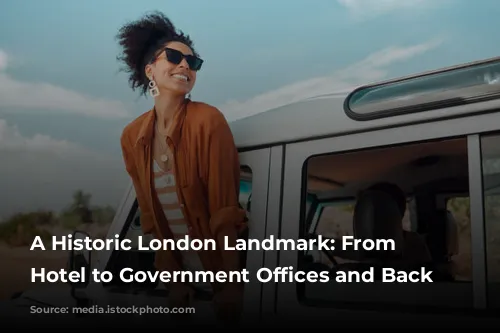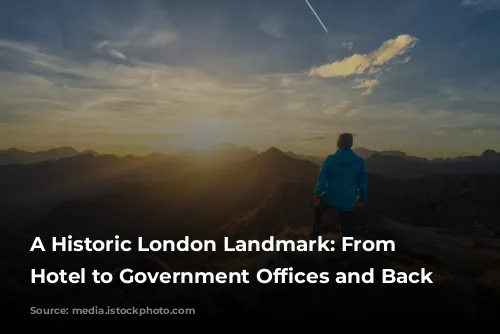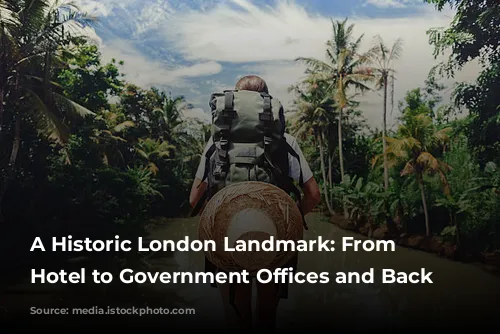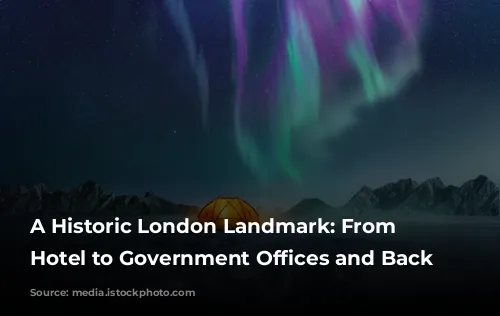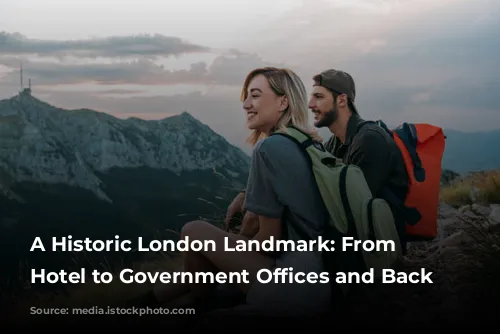The Corinthia Hotel London, a majestic building standing proudly at the corner of Northumberland Avenue and Whitehall Place, boasts a fascinating history. Its location, nestled between Trafalgar Square and the Thames Embankment, has played a pivotal role in its story.
Originally opened in 1885 as the Metropole Hotel, its proximity to the Palace of Westminster and government offices made it a strategic asset. During both World Wars, the hotel was requisitioned to accommodate government staff. After World War II, the Ministry of Defence purchased the building and used it as government offices until 2007, when it was sold and restored as a hotel. This iconic building has thus seamlessly transitioned from a grand hotel to government offices and back again.
The Metropole’s Golden Era
The Metropole Hotel, commissioned by the Gordon Hotels company, opened its doors in 1885. Its grandeur was evident in the 88-page brochure highlighting its luxurious amenities. The hotel soon became a hub for social gatherings. It hosted the annual dinners of the Aero Club and the Alpine Club, and served as the starting point for competitors in the first London to Brighton run in 1896. The hotel also saw its fair share of royalty, with the Prince of Wales, later King Edward VII, entertaining guests and using the Royal Suite.
World Wars and Government Offices
The outbreak of World War I brought a new chapter to the hotel’s story. The Metropole Hotel was requisitioned by the government to house staff. The two Commanders-in-Chief, Field Marshals John French and Douglas Haig, even stayed at the hotel on the eve of the British Expeditionary Force’s departure for France. After the war, the hotel resumed its operations, becoming known for its popular “Midnight Follies” cabaret.
From Cabaret to Government Hub
The Metropole Hotel continued to thrive in the inter-war years, hosting renowned musicians like Bert Firman, who became the youngest bandleader in the world at the tender age of sixteen. In 1936, the hotel was again requisitioned by the government, this time for office space. It played host to various departments, including the Ministry of Labour, Ministry of Transport, Air Ministry, and the Ministry of Defence. The building also served as the initial headquarters for MI9 and the Special Operations Executive during World War II.
Post-War Legacy and Transformation
After the war, the Metropole Hotel was purchased by the Ministry of Defence, who used it as an extension of their Whitehall complex. The building housed various departments, including the Defence Intelligence Staff. In 2007, after years of vacancy, the Metropole Building and its adjoining building, 10 Whitehall Place, were acquired by a consortium. The buildings were then transformed into a hotel and residential complex, reopening in 2011 as the Corinthia Hotel London.
A Timeless London Icon
Today, the Corinthia Hotel London stands as a testament to its rich history. Its transformation from a grand hotel to government offices and back again reflects its resilience and its connection to significant events in London’s history. From hosting royalty to serving as the headquarters for intelligence agencies, this iconic building continues to play a prominent role in the city’s social and cultural fabric.
